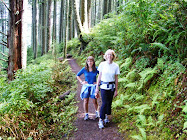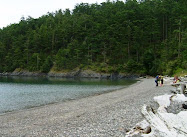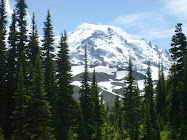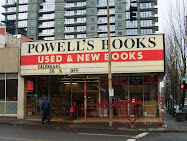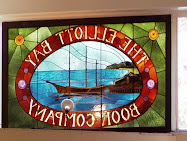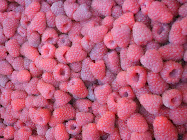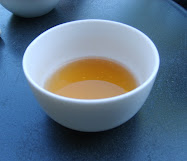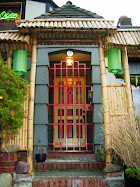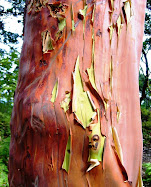
When I was growing up a few decades ago, provincial Portland used to carry a bit of a chip on its shoulder about its bigger, more glamorous sister to the north, Seattle.
So not so anymore.
Portland has grown up quite nicely, thank you. These days P-Town is the It city of the West Coast, and it seems like a week doesn’t go by without a story in the New York Times or other national media about the virtues of Oregon’s Big City.
I grew up 15 miles east of Portland in Troutdale, so I get down every few months to visit family and friends and savor the bounty of great places to eat and play. On my most recent trip, I tried to see things with the eyes of a true out-of-towner and be a quasi-tourist.
Way too early on a Friday morning I hop on a bus near my home in Seattle and ride downtown to King Street Station to catch Amtrak’s 7:30 train to Portland. These days train tickets cost about the same as a tank of gas (or less if you book early enough), and it’s much more relaxing and scenic than the I-5 slog. Four hours later we roll into the charmingly well-maintained, historic
Union Station at the edge of Portland’s trendy Pearl District on the north side of downtown.
Noon Friday: I wander a few blocks west into the heart of the Pearl to hunt for an inexpensive, healthful, tasty lunch. And I find just what I’m looking for. I plop down at a sidewalk table outside
Madena’s in the Pearl, a tiny, crimson-walled café featuring Mediterranean fare. I order a cup of freshly made red lentil soup and a hummous/veggie pita sandwich. The vegetarian soup is perfectly spiced, lemony, and savory.

(I’m known for my great homemade soups, so I’m pretty fussy about restaurant soup.) Right after I finish my soup, a foil-wrapped, simple pita sandwich arrives at my table, which I unwrap and munch away. Nicely flavored hummous, tomatoes, lettuce, and pepperocini rolled into a basic white pita. Fairly light, not big, but just right for my appetite. Service is quick and friendly, and my lunch is only $7.50 (sans tip).
12:45 Friday: One block west of Madena’s, I stop in The
Tea Zone to check email on my laptop and have a cuppa (sometimes it’s hard to be a tea drinker in such a coffee-centric place as Seattle). I snag a table in the sunny front room and order their daily iced tea special, a fragrant mango black tea, which comes with a cute miniature glass pitcher of refills. A luscious selection of tea pots line the walls up to the ceiling. I’m tempted by one of the classic Japanese steel teapots, but it’s not in the budget today.
3:00 p.m. Friday: Time to grab a snack and hit my favorite spot in P-Town:
Powell's Books. First I stop in Whole Foods nearby and buy a basket of freshly picked local raspberries, which I proceed to inhale at a sidewalk table outside. Then I get my book junkie fix at Powell’s before catching the MAX light rail out to Gresham for an overnight with my mom.
 7:30 p.m. Friday:
7:30 p.m. Friday: On a warm summer evening, we’re lucky to get a window seat at
Tad’s Chicken ‘n Dumplings, a historic, down-home restaurant on the Sandy River just upstream from downtown Troutdale. Tad’s has been serving chicken and dumplings (my favorite comfort food) since 1940. We dine with a view of the tangerine-pink sunset reflected on the forest-fringed river below. My mom and I split an order (chicken and dumplings, of course!) and have enough left over for her to take home for lunch the next day. The food is basic mid-twentieth century American, but it’s good and mostly fresh and well-prepared. We’re served a small tray of crudités to start, then a surprisingly good mixed green salad and warm, crusty fresh white rolls, soft on the inside. Our friendly waitress brings us a bowl heaped with two tennis-ball sized dumplings slathered in light chicken gravy atop succulent chunks of white and dark chicken. For me the only downbeat is the overcooked, canned string beans on the side, but hey, that’s what typical for this cuisine. We get an order of Marion berry cobbler to go for dessert; it’s tart-sweet, just the way I like it. All for only $21.95.
9:30 a.m. Saturday: My best childhood friend Becky, who still lives in East County, picks me up and we head into downtown Gresham for breakfast at The
Central Café. This spot is bright and hip for the former small town Gresham I grew up with. After a misstep of ordering granola that turns out to be full of coconut, which I can’t abide, our waiter kindly obliges me and I reorder a poached egg , English muffin, and the wonderfully chunky, paprika-spiced breakfast potatoes. Bingo—the egg is cooked just the way I prefer, not runny but not hard. We leave satisfied and full. My breakfast is only $6.
10:30 a.m. Saturday: We wander a few blocks over to Gresham’s
Farmer’s Market. I pick up some lovely baby fingerling potatoes, fresh string beans, a big bundle of baby carrots, some tiny little apricots, and an amazingly sweet, ripe Maryhill peach.

This far south of Seattle we’re in a slightly warmer growing zone, and I see big artichokes and a greater variety of berries than we get up north. We taste marvelous loganberries, Marion berries, boysenberries, raspberries, strawberries, and a hybrid called Sylvan—a mix of blackberry and Marion berry.
11:30 a.m. Saturday: On the way back to my mom’s we take a detour down Stark Street into the lush and green Sandy River gorge, part of the
Columbia Gorge National Scenic Area. It’s time for some exercise to work off breakfast, so we cross back over the river to Troutdale and stop for a walk up through the forest on
Robin’s Way. This pathway through the woods follows the route of an old Indian trail from the hillside above Troutdale down to the river. On the way up, I think about Robin Dix, the trail’s namesake and a former classmate of mine who was tragically killed in a car crash at 25. We pop out on top at the edge of a subdivision that lies where the Dix family used to farm beautiful strawberries. Sigh.
2:30 p.m. Saturday: I can’t come to Portland without a trip up the Columbia River Gorge. My mom and I drive on the scenic route through the pastoral rolling hills east of the Sandy River, up through Springdale and Corbett to the amazing view up the Gorge from
Chanticleer Point.

Just a mile or so eastward and a bit below we can see the recently restored Vista House at Crown Point, and Beacon Rock in the distance beyond, which Lewis and Clark climbed during their famous expedition in the early 1800s. We continue on down the old historic Columbia River Highway, that winds through the Gorge just inland from Interstate 84.

After a quick stop at
Crown Point, we head east and drive past several beautiful waterfalls along the verdant green slopes on the south side of the highway. Today we don’t have time to stop and hike any of the many great trails that wind to and above the numerous falls. We do make a quick stop at the biggee, Multnomah Falls, but the crowds are dense on a warm summer Saturday afternoon, so we don’t linger long.
7 p.m. Saturday night: Okay,
McCormick’s & Schmick’s wasn’t my choice for dinner, but I obligingly meet my friend Matt for dinner there in Old Town just a block from the Willamette River. They serve classic American guy food: thick, tender steaks, mashed potatoes, and generous portions of fresh seafood. Matt goes for a surf ‘n turf— a 9-oz steak with scampi and mashed potatoes—and I go with a shrimp and crab Louis with 1,000 island dressing. It’s a throwback but, like my dinner at Tad’s, it hits the spot. Matt cuts me a little chunk of steak, and although I usually shun red meat, I have to admit it tastes really good. With tip, my salad and fresh-squeezed lemonade is $25. After dinner we stroll through the warm summer evening to Pioneer Square and hang out, talking, sipping a cup of tea outside Starbuck’s.
10 a.m. Sunday: After another night in Gresham, I take MAX back into downtown Portland, where my brother and his wife meet me for breakfast on 23rd Ave in Northwest Portland. At Matt’s recommendation, we hit
Vivace, a coffee house and creperie. Set in a converted old Victorian house, the prices are reasonable and the breakfasts are wonderful. Today we don’t order crepes but opt for French-style omelettes, thin and folded up just like a crepe. My spinach and feta omlette is light yet filling, and the whole wheat bagel that comes with is not an excuse for a side—it’s fresh, chewy, and darn good. I only drop $7 on breakfast and jasmine tea.
12:15 p.m. Sunday: Time to leave. My brother drops me off back at Union Station, and I luckily get a window seat on the west side of the train (the water view side). I’m always a little sad to leave Portland, but I sit back and relax for the pleasant ride back to Seattle.












































